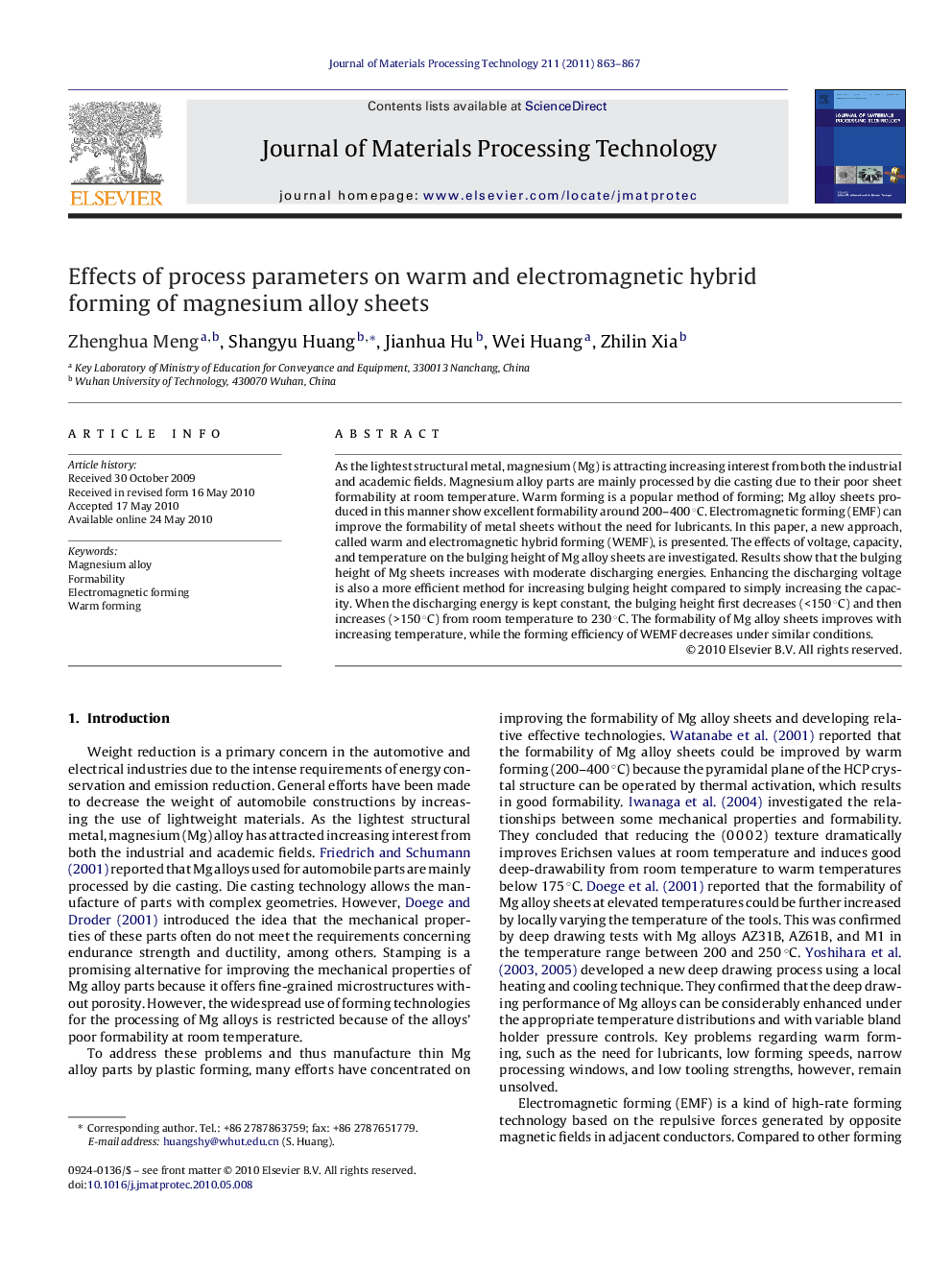| Article ID | Journal | Published Year | Pages | File Type |
|---|---|---|---|---|
| 794806 | Journal of Materials Processing Technology | 2011 | 5 Pages |
As the lightest structural metal, magnesium (Mg) is attracting increasing interest from both the industrial and academic fields. Magnesium alloy parts are mainly processed by die casting due to their poor sheet formability at room temperature. Warm forming is a popular method of forming; Mg alloy sheets produced in this manner show excellent formability around 200–400 °C. Electromagnetic forming (EMF) can improve the formability of metal sheets without the need for lubricants. In this paper, a new approach, called warm and electromagnetic hybrid forming (WEMF), is presented. The effects of voltage, capacity, and temperature on the bulging height of Mg alloy sheets are investigated. Results show that the bulging height of Mg sheets increases with moderate discharging energies. Enhancing the discharging voltage is also a more efficient method for increasing bulging height compared to simply increasing the capacity. When the discharging energy is kept constant, the bulging height first decreases (<150 °C) and then increases (>150 °C) from room temperature to 230 °C. The formability of Mg alloy sheets improves with increasing temperature, while the forming efficiency of WEMF decreases under similar conditions.
